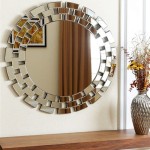How to Mirror Zoom Meetings for Enhanced Presentations and Collaboration
Mirroring a Zoom meeting allows participants to view the meeting content on a larger display, creating a more immersive and collaborative experience. This is particularly beneficial for presentations, workshops, or any scenario requiring detailed visuals. Several methods exist to achieve this, each with varying levels of complexity and compatibility.
Using AirPlay (for Apple Devices)
AirPlay offers a seamless wireless mirroring solution for Apple devices. Users can mirror their entire screen, including the Zoom meeting, to a compatible Apple TV or AirPlay 2-enabled smart TV. This method requires a stable Wi-Fi connection for optimal performance.
Key steps for mirroring with AirPlay:
- Ensure both the Apple device and the receiving display (Apple TV or smart TV) are connected to the same Wi-Fi network.
- Open the Zoom meeting on the Apple device.
- Open Control Center on the device (swipe down from the top right corner on newer iPhones and iPads, or swipe up from the bottom on older devices).
- Tap the "Screen Mirroring" button.
- Select the target display (Apple TV or smart TV) from the list of available devices.
- The Zoom meeting will now be mirrored on the larger display.
Utilizing Chromecast (for Android and Other Devices)
Chromecast, developed by Google, provides another popular method for mirroring Zoom meetings to a larger screen. Users can cast their entire desktop or a specific Chrome tab, including the active Zoom meeting, to a Chromecast-enabled device.
Key steps for mirroring with Chromecast:
- Ensure the device and the Chromecast are connected to the same Wi-Fi network.
- Open the Google Chrome browser on the device.
- Open the Zoom meeting in a Chrome tab.
- Click the three vertical dots in the upper right corner of the Chrome browser (More menu).
- Select "Cast".
- Choose the Chromecast device from the list of available devices.
- Select "Cast tab" to mirror just the Zoom meeting, or "Cast desktop" to mirror the entire desktop.
Direct HDMI Connection (Wired Mirroring)
A direct HDMI connection offers a reliable, wired solution for mirroring a Zoom meeting. This method requires an HDMI cable and an adapter if the device does not have a built-in HDMI port. Wired mirroring often provides the lowest latency and highest quality, ideal for presentations involving video playback.
Key steps for mirroring with HDMI:
- Connect one end of the HDMI cable to the device (using an adapter if necessary).
- Connect the other end of the HDMI cable to the HDMI port on the display.
- Select the correct HDMI input source on the display.
- The device's screen, including the Zoom meeting, will be mirrored on the display.
Using Screen Mirroring Features on Smart TVs
Many modern Smart TVs offer built-in screen mirroring capabilities that are compatible with various devices. Consult the TV's user manual to understand its specific mirroring features and compatibility.
General Steps for mirroring with Smart TVs:
- Ensure both the device and the Smart TV are connected to the same Wi-Fi network.
- Enable screen mirroring on the Smart TV.
- On the device, access the screen mirroring or casting settings.
- Select the Smart TV from the list of available devices.
Utilizing Third-Party Mirroring Software
Several third-party applications specialize in screen mirroring and can facilitate mirroring Zoom meetings. Options include Reflector, AirServer, and others. Research different software options to determine the best fit based on device compatibility and specific requirements.
General Steps for using mirroring software:
- Install the chosen mirroring software on the receiving device (typically a computer or laptop).
- Enable screen mirroring on the device.
- Select the receiving device (running the mirroring software) as the mirroring target.
Considerations for Optimal Mirroring
Several factors can influence the quality and stability of mirrored Zoom meetings.
Key Considerations:
- Network Stability: A strong and stable Wi-Fi connection is crucial for wireless mirroring methods.
- Device Compatibility: Ensure compatibility between the mirroring source and the receiving display or software.
- Software Updates: Keep the Zoom application, operating systems, and mirroring software up-to-date for optimal performance.
- Display Settings: Adjust display resolution and scaling settings as needed for best viewing results.
Troubleshooting Mirroring Issues
If mirroring issues arise, consider these troubleshooting steps:
Potential Solutions:
- Check network connectivity and restart routers if necessary.
- Verify device and display compatibility.
- Update software and drivers.
- Restart both the sending and receiving devices.
- Consult the documentation for the specific mirroring method or software being used.
How To Reverse The Mirroring Effect In Zoom Free Technology For Teachers

How To Mirror My In Zoom

How To Mirror On Zoom Flip Left Right

How To Mirror My In Zoom

Easy Steps To Mirror My On Zoom

Easy Steps To Mirror My On Zoom

How To Mirror My On Zoom Meeting Tutorial Mobile

How To Mirror My In Zoom

Can I Cast Zoom To My Tv
Zoom How To Mirror In Meetings








